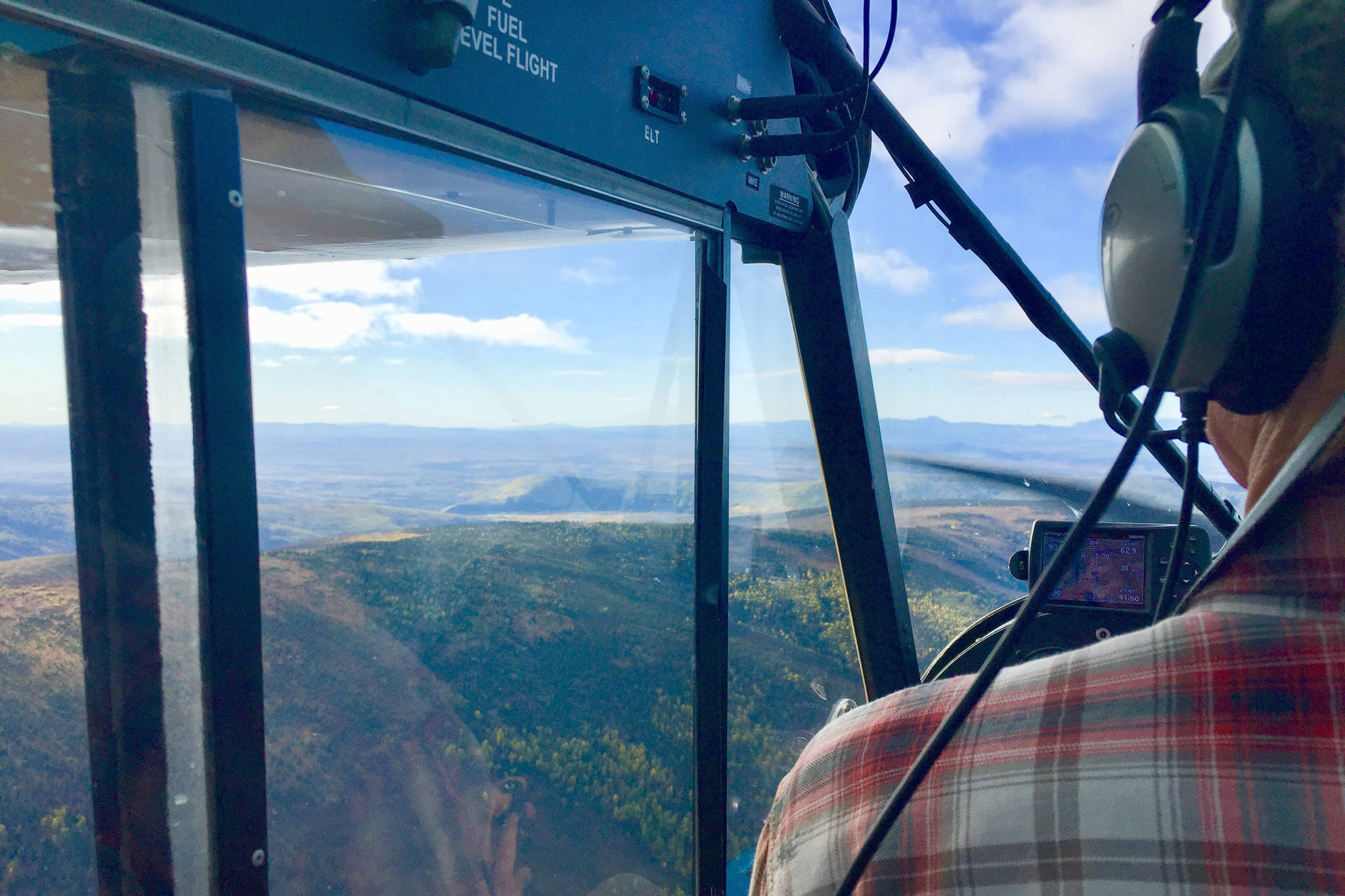I remember the first time my Uncle Larry flew down in his Cessna and picked me up at the little airport a few miles from my house. We spent the day flying around the Gila National Forest in New Mexico looking at elk and mule deer.
My little 7-year-old brain immediately appreciated the new perspective that a thousand feet of altitude provides, even when looking down at places I thought I knew.
A little over a decade later, my 19-year-old butt was firmly planted in the back seat of a Piper Super Cub flying over the endless expanse of wetlands east of the Koyukuk River in Interior Alaska. I had arrived in Galena a few days earlier to work for the U.S. Fish and Wildlife Service as a biological technician.
My first task was to be an observer for aerial surveys to estimate moose productivity in the Koyukuk and Innoko national wildlife refuges. To this new and inexperienced biologist came a revelation — the only way to accomplish large mammal surveys and locate radio-collared animals in such remote areas is with aircraft. I would need to learn how to fly.
It took years to save up the money and vacation time to get my pilot licenses. First, the private pilot license and tailwheel endorsement. More saving money and vacation time, and I got an instrument rating, and finally a commercial pilot license.
Knowing that it would be even more useful if I could land on the countless lakes in Alaska, not only for work but also for hunting and fishing, I earned my commercial seaplane rating the following year.
While meeting all these Federal Aviation Administration requirements allowed me to fly different types of aircraft and even fly for financial compensation, they were not enough to qualify as a pilot for the Department of the Interior.
Among additional Department of the Interior requirements, I had to gain more experience and log hundreds of additional hours as pilot in command, racking up several hundred hours in the last 12 months alone.
Even with the minimum required 500 hours in my logbook, I still had to meet additional Department of the Interior requirements.
Because many U.S. Fish and Wildlife Service missions are often not conducted near airports, I also had to hone my backcountry landing skills, which I practiced from the deserts of Arizona to the mountains of Oregon and Washington. Additional night hour requirements meant that I had to spend time flying the Sacramento Valley at night building time.
During wildlife surveys and radio-tracking missions, there is always a lot of circling animals at low altitude. To increase safety during these and other flights, U.S. Fish and Wildlife Service pilots are required to periodically take Emergency Maneuver Training.
Commonly referred to as “spin training,” these training sessions let you practice spin recoveries and other maneuvers to get yourself out of bad situations, by purposefully getting yourself into them. Aside from the fact that it might save you and your passengers someday, I have to admit that spin training is also some of the most fun flying I’ve done.
As a pilot-biologist for the Kenai National Wildlife Refuge, I am expected to conduct low altitude surveys for everything from moose and caribou to trumpeter swans. I will also spend a lot of time in the Kenai Mountains doing surveys and radio-tracking missions for Dall sheep and mountain goats, which requires additional Department of the Interior training and experience flying at low altitudes in the mountains.
My other duties include hauling colleagues and gear to remote locations for projects such as lake surveys for aquatic invasive plants and maintaining refuge cabins and trails, as well as aerial photography flights, checking snow depth markers and other specialized missions.
Additional Department of the Interior requirements include recurrent specialized training for operations such as off-airport and short-field landing, low-level surveys, mountain surveys, resource reconnaissance and floatplanes, as well as periodic tests of my knowledge and skills for these missions.
All these requirements might seem like a lot, but they collectively help ensure that Department of the Interior personnel return safely from a variety of U.S. Fish and Wildlife Service missions. The fact is that pilots can always improve with practice and training with more experienced pilots.
I look forward to continuing to improve my skill set and putting it to use for the Kenai refuge this summer.
Dom Watts is a Wildlife Biologist at Kenai National Wildlife Refuge. Find more Refuge Notebook articles (1999-present) at https://www.fws.gov/Refuge/Kenai/community/Refuge_notebook.html.

